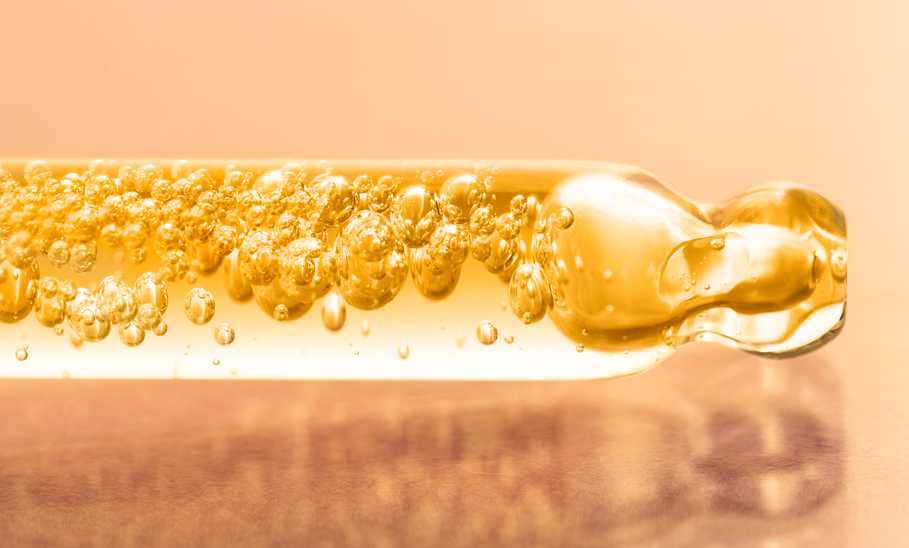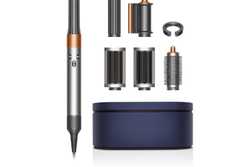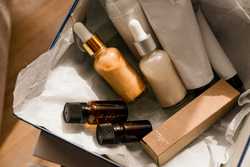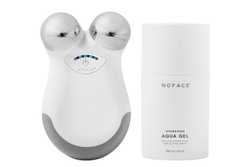Tretinoin vs Retinol: Which is Best for You?

Our evaluations and opinions are not influenced by our advertising relationships, but we may earn a commission from our partners’ links. This content is created by TIME Stamped, under TIME’s direction and produced in accordance with TIME’s editorial guidelines and overseen by TIME’s editorial staff. Learn more about it.
Retinol and tretinoin are two types of retinoids popular for their ability to address fine lines and wrinkles and improving overall skin health. Retinoids are compounds derived from vitamin A and are commonly used in topical creams to treat various skin conditions. Two derivatives, tretinoin and retinol, are extracted from vitamin A and used to treat skin conditions such as acne and signs of aging. Tretinoin, a prescription-strength retinoic acid, is used for severe cases, whereas retinol serums are a milder option available over the counter which converts into retinoic acid once applied to the skin.
“Retinols are a vitamin A derivative that have long been coveted as the science secret to acne and aging,” Heidi Prather, MD, FAAD, of Westlake Dermatology in Austin, Texas says. “Retinol is used for the added benefits of dermal thickening, exfoliation and glow, and collagen repair. Different retinoids have different potencies and sensitivities. The more a treatment exfoliates the skin, the more prone to flakiness, dryness, and irritation it is. This onboarding period of irritation is called retinoid dermatitis,” Dr. Prather says. “Because the dead layer of skin cells slough off leaving the skin glowy, you may experience more sensitive skin when you are ’retinized.’ Retinols should be used at night to avoid photosensitivity and because retinols are easily degraded by UV light.”
Although retinol and tretinoin sound similar, they have differences. Tretinoin, also known as all-trans retinoic acid (ATRA), is marketed under multiple brand names, such as Retin-A and is considered a better alternative to retinol for reducing the appearance of fine lines and wrinkles.
Everyone's skin is different and reacts differently to environmental factors such as sunlight, stress, and aging, however, retinoids can help address the effects of these factors. They’re worth adding to your skincare routine. For help determining the best retinoid product for you, consult with a board-certified dermatologist.
Tretinoin is considered a far superior alternative to retinol for those seeking to address acne breakouts, reduce fine lines and wrinkles, lighten dark patches, or smooth rough skin texture. A lot of scientific evidence supports this. Tretinoin has the potential to transform the skin of individuals, whether they have mild to moderate acne or want to reduce wrinkles, sun damage, hyperpigmentation and improve their skin texture. It’s beneficial for those who want to see quick and noticeable improvements in the look and health of their skin. Tretinoin can be an alternative for those who haven’t had success with retinol and are willing to try a more assertive therapeutic strategy.
Starting with retinol is the best option for most people, as it has a lower concentration than other retinoids—so it’s less likely to irritate the skin. It’s recommended to apply retinol cream every other day at first so your skin can adjust to the treatment. Retinoids are a viable solution for various skin problems, such as acne, wrinkles, and hyperpigmentation.
With so many options available, it might be confusing to know which product to choose. If you don't see the desired outcome after using retinol for two to three months, try switching to a higher percentage retinol cream. Since these are over-the-counter medications, you can adjust the concentration as per your preference. Changing your retinol treatment can result in adverse reactions, so monitor your skin for any negative effects and stop using the product if needed. The right retinoid treatment for you will depend on your skin type, risk factors, and desired outcome. Consult a dermatologist to make an informed decision for your specific case.
Retinol is available in various forms, such as creams, gels, lotions, and liquids, with concentrations of 0.025%, 0.05%, or 0.1%. It’s recommended to apply a thin layer of the product to the affected area once daily at bedtime, after cleansing, and followed by a moisturizer. The lower dosage means it’s most appropriate for those new to retinols, with dry or sensitive skin or other concerns.
Tretinoin is also available in various forms, such as creams, serums, lotions, and gels, with a standard dosage that is nearly ten times stronger than retinol. A usual dosage for tretinoin is to apply a thin layer of 0.25%, 0.5%, or 1% product to the affected area once daily at bedtime, after cleansing, and followed by a moisturizer. It’s most effective for people who have built up resilience to retinols and are looking for longer-term results.
Tretinoin, a variant of retinoic acid, is the active form of vitamin A. Unlike other forms, it can be directly absorbed by skin cells, bypassing the need for conversion. This direct absorption allows it to work quickly and effectively, attaching to retinoic acid receptors and stimulating cell turnover and collagen production, thereby enhancing skin texture and reducing wrinkles and fine lines.
Tretinoin is recognized for its strong and immediate effect, which makes it more efficient in speeding up skin renewal than retinol. Its mechanism of action involves stimulating the generation of new skin cells and hastening the shedding of the outer layer of the skin, leading to better acne clearance and skin rejuvenation. Tretinoin, being a prescription drug, is more potent than retinol. It can visibly reduce acne breakouts, fine lines and wrinkles, dark spots, and rough skin texture. In comparison to retinol, tretinoin provides more noticeable outcomes. There is strong clinical evidence supporting tretinoin's efficacy in treating severe acne and visible signs of aging, making it a trusted choice among dermatologists.
Prescription tretinoin is a powerful agent that promotes the renewal and turnover of cells, replacing older skin with newer, fresher skin. It provides more benefits than just minimizing surface issues on the skin, such as fine lines, discoloration, age spots, and rough patches. Tretinoin's anti-aging properties penetrate deep beneath the skin's outer layer to the epidermis, unlike traditional anti-aging serums available over the counter. This transformative process stimulates the production of new collagen in approximately six months, resulting in a significant improvement in the texture and appearance of your skin, making it smoother and more youthful-looking.
Tretinoin also has an exfoliating effect that can enhance the texture and tone of the skin. Initially developed to treat acne, it also unclogs pores and prevents further blemishes. If you're struggling with adult acne, it can help with blemishes and signs of aging.
Many dermatologists agree retinol is a highly effective remedy for addressing uneven skin texture. By promoting collagen production and accelerating the renewal of the outermost layer of the skin, vitamin A derivatives can help enhance the skin's texture and tone while also reducing the appearance of hyperpigmentation.
Nurse practitioner Maegan Griffin, CEO and Founder of Skin Pharm, says, “Retinol encourages cell turnover and refines the skin’s surface, a process that can cause temporary irritation and sensitivity. A good hyaluronic acid serum helps calm some of that irritation. I love using our Youth Serum for this.”
![[object Object] [object Object]](https://skinpharm.com/cdn/shop/files/skinpharm_youthserum_2000x.png?v=1701470329)
Retinol 0.3% is an ideal solution for those new to retinol or have sensitive skin and want to minimize the appearance of aging. It can help make your skin smoother and firmer, offering a range of benefits. Its slow-release formula and microencapsulation make it gentle on the skin, making it an essential part of any skincare routine, like anti-aging eye creams and Vitamin C serums.
When using retinol 0.3%, it's important to have clean and dry skin before applying a thin layer at night. To avoid initial dryness or redness, start with one application once or twice a week and gradually increase the frequency to every night as your skin adjusts to the product. Once you have successfully included retinol 0.3% in your skincare routine and your skin has adapted to it, you can confidently move on to retinol 0.5%.
Retinol 0.5% is more potent and offers the same benefits. It can enhance skin texture and make it firmer, nourished, and youthful-looking. You may notice visible improvements in fine lines, wrinkles, and dark spots. If you're new to retinol, it's better to start with a lower concentration, such as retinol 0.3%, to help ease your skin into its effects. This can minimize the risk of sensitivity or irritation when you're ready to switch to retinol 0.5%.
![[object Object] [object Object]](https://i5.walmartimages.com/seo/CeraVe-Acne-Resurfacing-Retinol-Face-Serum-with-Retinol-Niacinamide-for-Acne-Prone-Skin-1-fl-oz_298f8161-8bc8-4425-aeab-808097502acf.7485e24fc7877212334f4fb6c8248bcd.jpeg?odnHeight=2000&odnWidth=2000&odnBg=FFFFFF)
Topical tretinoin has advantages, but it also has some drawbacks that can be uncomfortable for certain people. Tretinoin may make the skin more sensitive to sunlight, which can result in sunburn. Protect yourself from the sun by wearing sunscreen, staying in the shade, and wearing protective clothing when outside.
When you begin using tretinoin, you may experience a breakout because tretinoin speeds up the process of skin cell turnover. This can cause acne lesions to appear on the skin's surface. Additionally, tretinoin may result in dryness, flakiness, redness, and itching. If you experience excessive redness, blistering, swelling, or skin crusting, it's recommended you stop using the medication until your skin has healed. Those with eczema should be cautious when using tretinoin since they may experience severe irritation.
Retinol burn refers to severe skin irritation due to the use of retinol. Although less irritating than some other retinoids, retinol can still lead to redness, pain, and peeling skin. Signs of retinol burn include excessive skin dryness, flaky or peeling skin, skin pain or sensitivity, and redness or discoloration. Retinol prompts faster skin cell turnover, which can lead to side effects like skin sensitivity and irritation. If you experience retinol burn, you can address it in a few ways. First, take a break from using retinol and give your skin time to heal. Use gentle, hydrating, and fragrance-free cleansers, avoid exfoliating and wearing makeup, and practice good sun protection by wearing a high-SPF sunscreen.
To minimize sensitive skin from retinol use, adjust your retinol routine by applying the product every other day, using a smaller amount, mixing moisturizer with your retinol, or trying the short-contact method for the first few weeks. This involves applying a thin layer of the retinoid product to your face at night, and leaving it on like a face mask for about 20 minutes, then rinsing the product off before applying moisturizer and heading to bed. Talk to your dermatologist about the right next step for your skin if you experience retinol burn, as it may not be the right product for you.
Tretinoin is available in 0.025%, 0.05%, and 0.1% strengths. The 0.025% strength is good for beginners or those with sensitive skin, skin of color, or rosacea. The 0.05% strength is a popular choice for reducing wrinkles and improving skin texture. The 0.1% strength is for experienced retinoid users or those with severe acne, hyperpigmentation, or wrinkles.
Tretinoin, with a concentration up to 20 times stronger than retinol, can be highly effective, but it increases the likelihood of side effects such as redness, peeling, dryness, and post-inflammatory hyperpigmentation. Only available with a prescription, your healthcare provider will determine the appropriate strength for you based on your skin type, severity of skin concerns, and existing skincare routine. They will adjust the frequency and dose of your tretinoin based on how your skin responds to minimize side effects and ensure optimal results.
While tretinoin is often touted as the most effective way to treat skin problems, it's not a universal solution. Additionally, the time it takes for one's skin to improve can differ significantly from one person to another. It’s vital to adhere to your dermatologist’s instructions which are tailored recommendations based on your skin's specific requirements.
Retinol is a great starter solution for anti-aging and acne benefits. Incorporating retinol and other retinoids in your skincare routine can effectively treat acne breakouts, dark spots, sun damage, fine lines, and other aging signs. For those who are new to skincare, incorporating this ingredient can be challenging, but it's an essential component of most skincare routines. The primary side effect of using retinol is skin irritation, especially when initially starting to use it. The best way to achieve optimal results is by starting slowly, using gentle skincare products, and protecting your skin from the sun.
Retinol and tretinoin are considered teratogenic, meaning they may cause birth defects, and should not be used during pregnancy or while breastfeeding. Additionally, those who use Isotretinoin (Accutane) are vulnerable to hypervitaminosis A, a condition that can cause major health problems such as vision impairment, heightened intracranial pressure, elevated cholesterol levels, and inflammation of the liver, pancreas, or digestive tract.
The availability of various vitamin A treatments and their concentrations varies depending on the type of treatment you choose. Tretinoin, a potent topical medication used to treat acne, aging, and other skin conditions, is not available over the counter in most countries, including the United States. It’s a prescription medication and should only be used under the supervision of a medical professional such as a dermatologist or nurse practitioner. Use caution with tretinoin. It’s recommended to book an appointment with a medical professional who can determine whether it's right for you.
Retinols can be purchased over the counter and are readily available at drugstores, skin spas, and beauty stores like Sephora. “Retinol is a potent cell-communicating ingredient and antioxidant that tells damaged skin cells to make healthier ones and counteracts the breakdown of collagen and elastin,” says Griffin. “In other words, it promotes skin cell turnover, which leads to healthy, radiant skin. This process visibly improves the look of fine lines, wrinkles, acne, oiliness, hyperpigmentation and rosacea.”
While you can get these treatments without a prescription, apply the low-and-slow approach. Start with a small amount of low-level retinol at night, and wait a few days before assessing your tolerance. If you don't have a reaction, try applying the product again in a few days. If the retinol formula causes redness and flakiness on your skin, mix it with your moisturizer or apply it on top of your moisturizer. Gradually increase the frequency to every other day or three times a week.
When using retinol products, it's advised to add them to your nighttime skincare routine only, as they can make your skin more sensitive to sunlight, and it's important to wear sunscreen with SPF 50+ every morning while you’re using retinols.
Tretinoin and retinol are similar two types of skin treatments but differ in potency and availability. Tretinoin is stronger and delivers faster, more noticeable results, but can also cause more severe side effects. Retinol is milder and can be bought without a prescription. Consult with a dermatologist prior to using either of these treatments and to follow their recommended usage guidelines.
The information presented here is created by TIME Stamped and overseen by TIME editorial staff. To learn more, see our About Us page.



